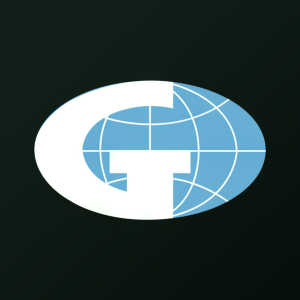Growing Digital Divide in the Workplace is Forcing Employers to Rethink the Ways They Communicate with Employees
ROLLING MEADOWS, Ill., Feb. 23, 2021 /PRNewswire/ -- In March 2020, the COVID-19 global pandemic forced countless employers around the globe to send their non-essential employees home. Few organizations had a contingency plan for such a scenario, meaning the overwhelming majority of employers had to rethink their operations and communication functions on the fly. According to more than 800 employers from 45 countries surveyed in Gallagher's 2021 State of the Sector Survey, almost every organization (
Changes to organizational culture topped the list of priorities, with
2020 brought the importance of employee experience (EX) to the forefront. To set organizations up for success, Gallagher's communication experts identified the best practices employers leaned into as a result, with themes such as an increased focus on employee mental health and wellbeing (
Rise of the Digital Divide
Due to COVID-19 precautions, many employers continue to limit or prohibit in-person workplace interactions among non-essential workers. For these organizations, digital channels have become the primary, if not the only, means of communication. This has created a digital divide. Even though three-quarters of organizations (
The rise of digital communications has enabled organizations to track what their employees receive, read, watch or click, but few turn these touchpoints into actionable insights. In fact,
"Through conversations with internal communicators, it became clear that their workload increased in 2020 and many have taken on the work of more than one person," said Ben Reynolds, Global Managing Director, Employee Communication Practice, Gallagher. "When we launched the survey at the start of the pandemic, 1 in 3 respondents said their HR/internal communication was lacking, 2 in 5 felt under pressure to deliver, and 1 in 5 felt considerably overworked. The data makes it clear that employers can do a better job assessing and adjusting their employee experience strategies. When done right, this can reduce operating expenses and, at the same time, improve their employees' wellbeing."
Crowded Channel Landscape
The survey also reveals specific tactics, including communication channels that organizations were relying on most. When asked about increased channel usage, Gallaher found limited changes in channel popularity year over year, with Microsoft products continuing to reign as most popular. However, the survey uncovered that many organizations reacted to the pandemic by rolling out new technology quickly. As a result, multiple digital channels (web calls, mobile apps, messaging apps, and collaboration platforms such as Teams, Yammer and Zoom) flooded the employee communication space. The increase of such messaging became overwhelming, and overall engagement took a hit. According to Gallagher's experts,
"However you may feel about it, remote working is here to stay," said Reynolds. "Before the pandemic, employers were able to rely on a robust holistic rewards strategy to win the war for talent. Now, they need new strategies to maintain productivity and connectiveness. The data shows employers are closely monitoring new strategies and adapting enhanced digital capabilities, because the return on investment is still clear: a more engaged and connected employee experience is better for the bottom line."
Most internal communication teams have seen their budgets cut drastically and have, as a result, had to think very carefully and strategically about their spend and projected return on investment in 2021. Gallagher's State of the Sector Survey is designed to be a tool for employers to evaluate their current employee experience by assessing the tactics their peers are utilizing to maintain connectivity, protect employee wellbeing and balance budgets.
Gallagher's 2021 State of the Sector Survey is based on data collected in October 2020 from more than 800 employers representing 34 industries across 45 countries. The report can be found at www.ajg.com/stateofthesector.
ABOUT GALLAGHER
Arthur J. Gallagher & Co. (NYSE: AJG), a global insurance brokerage, risk management and consulting services firm, is headquartered in Rolling Meadows, Illinois. The company has operations in 49 countries and offers client service capabilities in more than 150 countries around the world through a network of correspondent brokers and consultants.
Contact:
Mary Schwartz, Gallagher
847.378.5893
mary_schwartz@ajg.com
![]() View original content to download multimedia:http://www.prnewswire.com/news-releases/growing-digital-divide-in-the-workplace-is-forcing-employers-to-rethink-the-ways-they-communicate-with-employees-301233478.html
View original content to download multimedia:http://www.prnewswire.com/news-releases/growing-digital-divide-in-the-workplace-is-forcing-employers-to-rethink-the-ways-they-communicate-with-employees-301233478.html
SOURCE Gallagher








